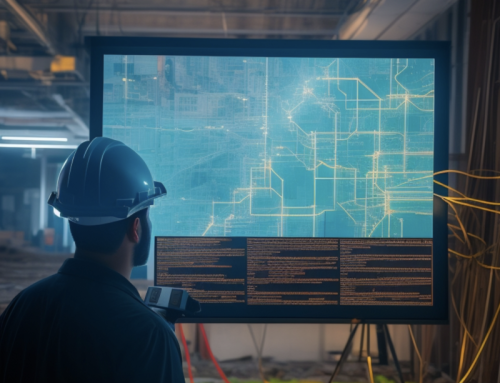By Barry Nelson*, CEO of FactorLab
In today’s rapidly advancing technological landscape, artificial intelligence (AI) emerges as a game-changer, especially in the realm of safety management. AI’s prowess isn’t just in processing data but in transforming our approach to safety.
The Power of AI in Safety Conversations
Imagine a scenario: A leading utility company records countless tailboard meetings daily. Reviewing these manually? Nearly impossible. With AI, not only can these conversations be efficiently evaluated, but they can also be organized based on their effectiveness in promoting safety. Through the lens of the ‘energy wheel’ principle, AI determines how well conversations align with safety principles, enabling real-time feedback and actionable insights.
Uncovering Invaluable Insights
The application of AI offers safety professionals unprecedented insights into the effectiveness of safety systems. By assessing real-world implementations of safety principles, AI offers tangible real-world examples, which experts can utilize to adapt their strategies. The potential for customization is vast, allowing a tailored approach to analyzing what matters most to an organization.
Beyond Data: A Cultural Transformation
The integration of AI in the safety domain promises not just enhanced hazard recognition, but a complete overhaul of safety culture. Imagine a world where severe injuries decrease by 50% in the next decade. Here, AI isn’t just a tool for data analysis; it’s an agent fostering psychologically safe cultures that thrive on real-time knowledge sharing. It enables organizations to transition from just identifying hazards to becoming true learning organizations.
A New Age for Safety Data
Companies have started recording safety conversations, moving away from traditional paperwork. With AI, these conversations can be objectively analyzed, offering insights into organizational culture like never before. As Ron Sokol, CEO of Safety Council Texas City, puts it, this approach turns safety professionals from mere “list checkers” to proactive participants in risk management.
Redefining Job Hazard Analyses
Harvard Business School’s Amy Edmondson, who introduced the concept of “team psychological safety,” emphasizes the importance of open and respectful dialogue in safety management. Transitioning from a blame culture to a culture of curiosity is essential for incident prevention. Effective leaders engage differently, and with AI, CEOs can glean insights from thousands of field conversations, recognizing the urgent need to bridge cultural gaps.
Witnessing the AI Impact
John Messing, Safety Director of Joseph J. Albanese Inc., notes how AI has made workers more open and receptive to sharing. Companies have reported drastic increases in engagement and a significant decrease in OSHA recordable incidents.
The Way Forward
AI promises a future where safety isn’t just a protocol but an integral part of professional culture. It enables organizations to perceive and align with culture in unprecedented ways. As Todd Conklin, a renowned safety adviser, suggests, the focus needs to shift from blame to open dialogue.
AI’s introduction to safety management isn’t just a technological advancement; it’s a catalyst for a safer, more secure work environment. With AI, we’re not just ticking boxes; we’re paving the way for a safer future for all.
Continue reading the full article for a deeper dive into AI’s transformative potential in the safety industry.
*Barry Nelson, the author of this article, is the president and CEO of FactorLab. With his team, he pioneers in merging technology with safety management, aiming for a safer workplace.






